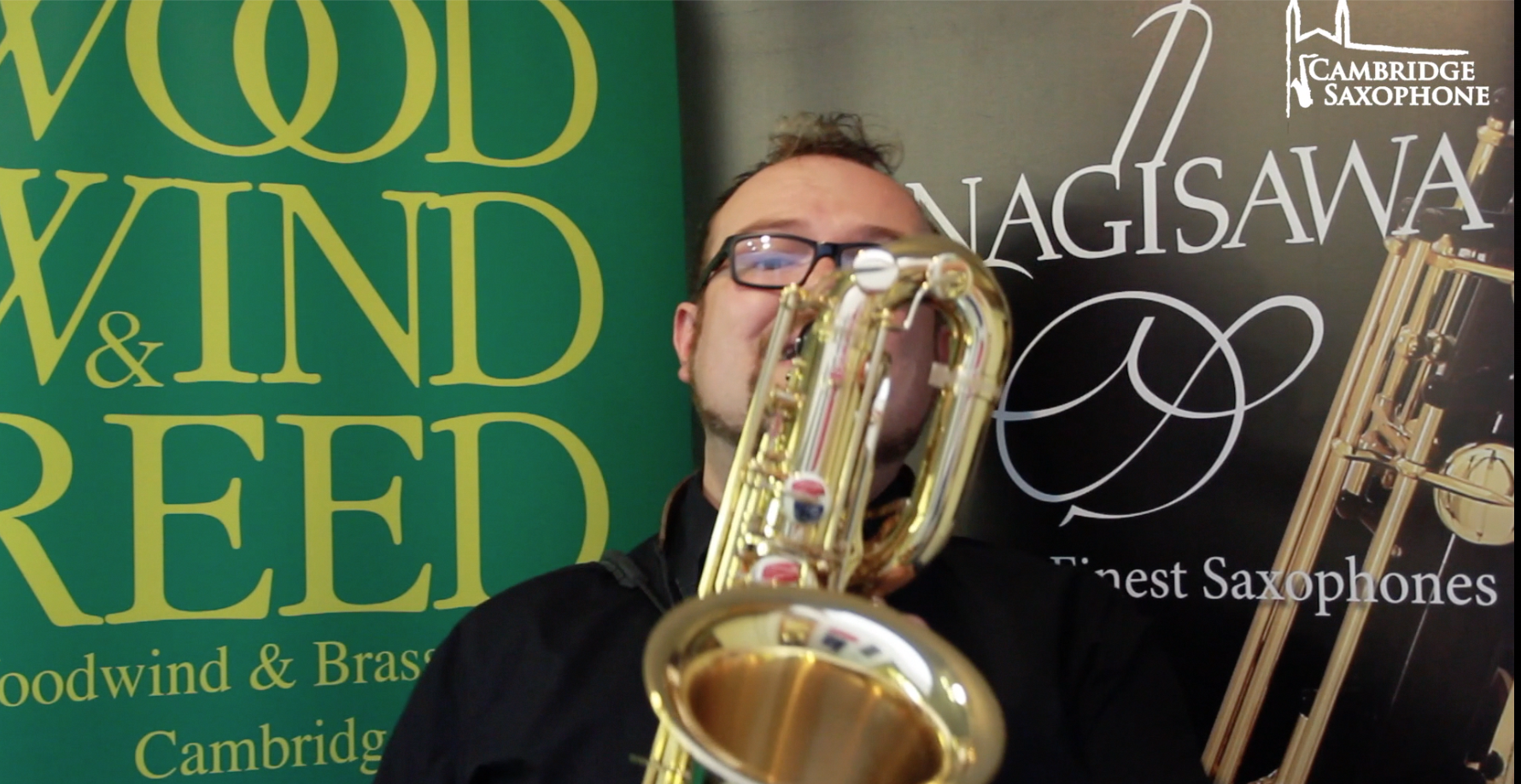Frank Griffith reviews the Saxholder
Here’s another review of the Jazz Lab Saxholder by saxophonist Frank Griffith. You can watch my review here, and my interview with Frank here.
The Saxholder is the solution for all saxophonists, regardless of age, experience, size or shape. The basic problem is that the human neck was not designed to have a hunk of metal hanging from it. It’s not a hook hanging from the ceiling for lighting gear or a frame for a swing.
‘PUT YOUR SAX ON HOLD AND DON’T GET STRAPPY’
Just look at the two terms. ‘Strap’ means to be financially strapped, strapped into a difficult situation, lashed with a strap, and so on. Not particularly positive images. On the other hand, ‘hold’ or ‘holder’ has a much more secure and comforting sound to it. To hold close, put something on hold in order to sort it out, the safety of being in the hold of a ship, etc. The list goes on.
These differences are summed up in the principle of the holder versus the strap. By holding the instrument close to your body you can achieve a oneness with it; it can help you achieve a much better dialogue and relationship in order to realise your musical ends. Trying to achieve this intimacy with a heavy chunk of metal strapped to a vulnerable part of the body (your neck) is not good start – or end, for that matter.
To be fair, the holder takes some getting used to. Depending on your girth, height, and so on you might need to try different sizes to get the right fit. It can also sometimes slip off your shoulders a bit when the horn is not fastened to it – it’s more complicated and cumbersome than the simpler strap round your neck. While these inconveniences might irk from time to time, they don’t actually affect the main function of the holder, which is to balance and lessen the strain of the horn on your body. Regardless of the standard of our playing, what could be more important than helping us towards mastery of the instrument by making playing the horn more comfortable and enjoyable?
Hooked on sax, indeed, and I’ll shoulder the cost in order to go unstrapped and achieve a hold in one with my horn …
For more information logon to www.jazzlab.com or email [email protected]
Frank Griffith






